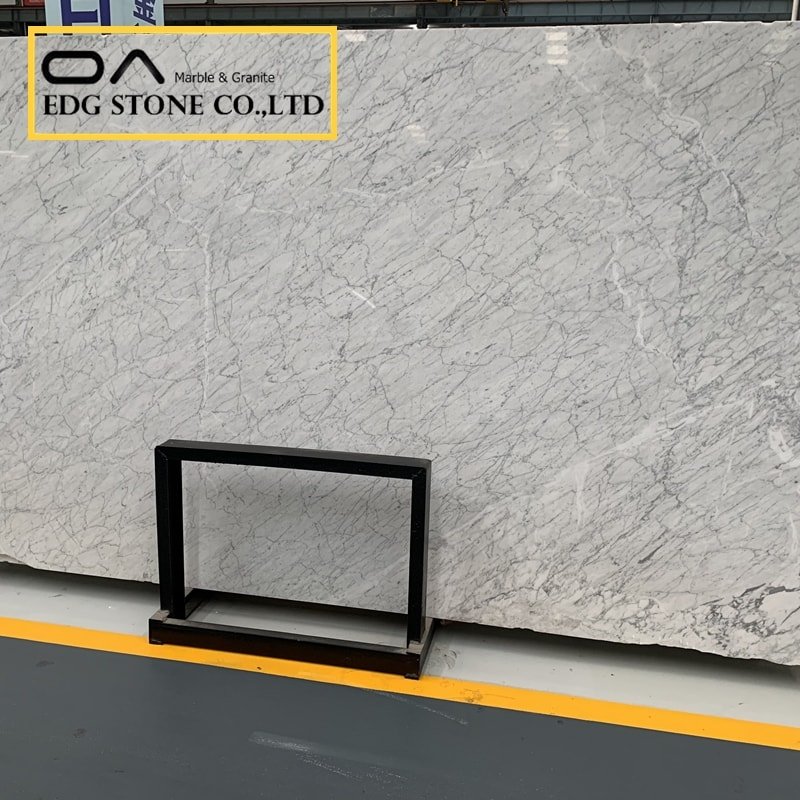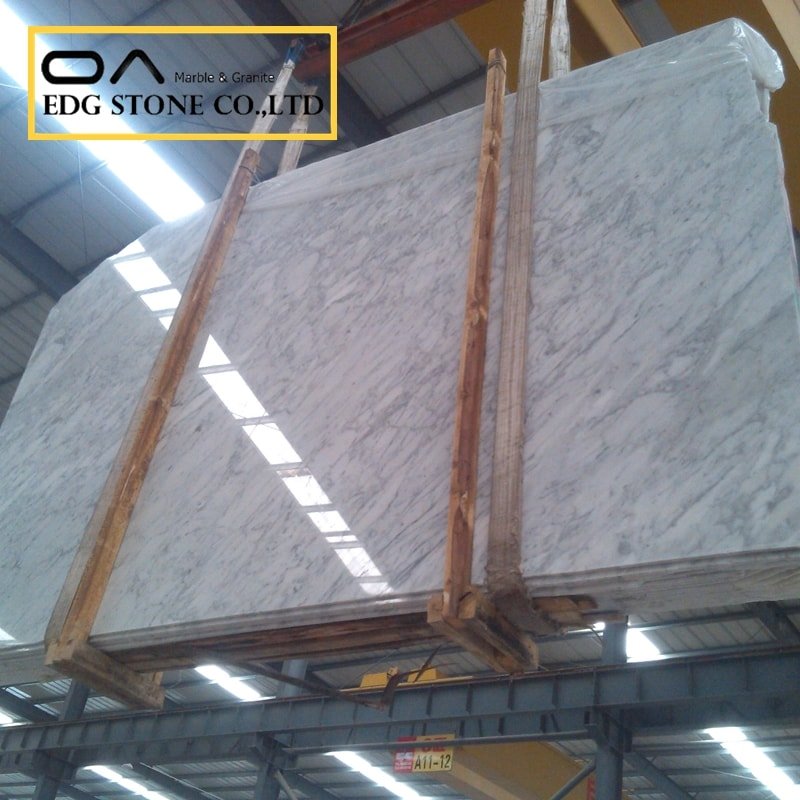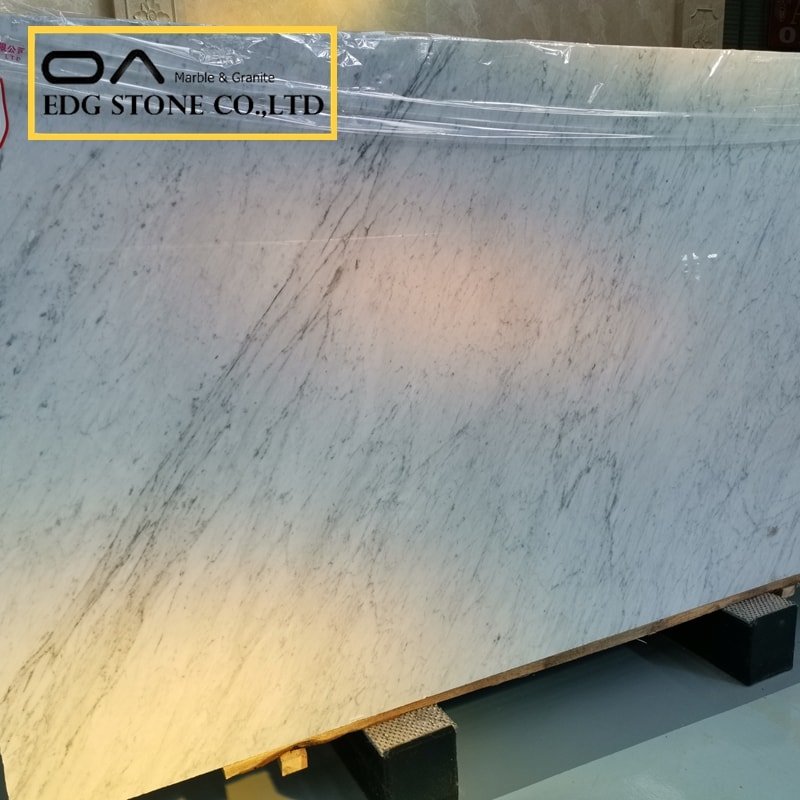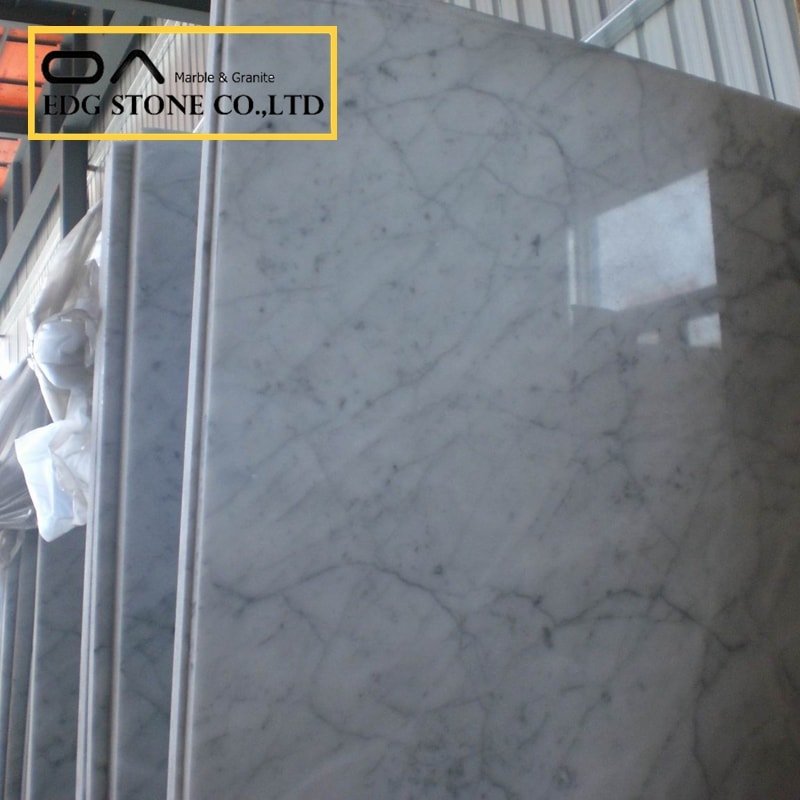Quick Summary:
Table of Contents
Toggle- What are the disadvantages of Carrara marble?
- Short answer/opening
- 1. What is Carrara marble? (quick primer)
- 2. Core disadvantages — detailed breakdown
- 3. Direct answers to your keywords (SEO Q&A section)
- 4. Maintenance & real-world costs (what to expect)
- 5. Compliance, regulations & industry trends (what’s changing)
- 6. Alternatives and decision checklist
- 7. Case study snapshot (short)
- 8. Visuals & on-page SEO structure recommendations (for dev/SEO)
- FAQ — Google hot-search FAQ (5 items)
- References & further reading (select authoritative sources used)
- 50 SEO tags (use across CMS/tag cloud/site taxonomy)
Quick Summary: Carrara marble is prized for its soft white background and subtle grey veins, but it carries notable tradeoffs for countertops and high-traffic uses: it stains and etches more easily than harder stones (due to calcite composition), is prone to surface scratching and wear, can yellow or weather over time, and requires regular sealing and careful maintenance. For many kitchens and commercial sites, engineered alternatives (e.g., quartz) or harder marbles (Statuario/Calacatta with higher vein stability) may be better long-term choices. :contentReference[oaicite:0]{index=0}


What are the disadvantages of Carrara marble?
Short answer/opening
Carrara marble is beautiful and iconic, but its main disadvantages for countertops or heavy-use surfaces are stainability, etching from acids, scratching, sensitivity to heat/thermal shock, and variability in grade and structural soundness. These characteristics make it a higher-maintenance choice compared with harder natural stones or engineered surfaces — though many owners choose Carrara for its look and accept the upkeep.
1. What is Carrara marble? (quick primer)
Carrara marble is a calcitic marble quarried primarily in the Apuan Alps near Carrara, Italy. It typically has a white to light-gray background with soft gray veins and has been used for sculpture and architecture for centuries. Because Carrara is mainly recrystallized calcite (CaCO₃), it shares the chemical and physical behaviours of calcite-rich marbles.
Why that matters: calcite reacts with acids and is relatively soft compared with silicate minerals; those facts explain much of Carrara’s maintenance profile. Encyclopedia Britannica維基百科
2. Core disadvantages — detailed breakdown
2.1 Staining — “Does Carrara marble stain easily?”
Yes — Carrara is comparatively porous and, unless properly managed, can absorb oils, wine, coffee, and pigmented liquids, producing permanent or difficult stains. Regular impregnating sealers improve resistance but do not make marble stain-proof. Industry guidance describes impregnators as repellents — they reduce risk but don’t eliminate it.
Practical note: immediate blotting of spills and routine maintenance significantly reduces stain risk. For heavy-use kitchens, expect resealing and occasional professional treatment.
2.2 Etching — acid damage vs stains
Etching is the chemical dulling or pitting of the polished surface caused when acids (vinegar, lemon juice, some cleaners) react with calcite — the acid dissolves surface calcium carbonate, producing a dull mark. Etching is not the same as staining; etch marks alter the finish and often require honing or polishing to remove. Because Carrara is calcite-rich, etching is a frequent complaint.
2.3 Scratching & abrasion
On the Mohs scale, calcite ≈ 3, and typical marbles sit around Mohs 3–4. That means Carrara is softer than quartz (≈7) and more susceptible to scratches and abrasion from knives, metal cookware, and abrasive cleaners. Surface micro-scratches accumulate over time and change the aesthetic from polished to worn. 維基百科International Gem Society
2.4 Heat & thermal sensitivity — “Can you put hot things on Carrara marble?”
While marble tolerates moderately high temperatures, placing extremely hot pans directly on a polished Carrara countertop risks surface damage (thermal shock, discoloration of finishes, or protective coating failure). Industry and renovation guides recommend trivets or hot pads as standard practice.
2.5 Structural variability, fissures & grading
Marble slabs vary by vein pattern, fissures, and internal soundness. Higher grades (soundness-tested and specified under ASTM standards) have fewer structural risks, but lower-grade or heavily veined Carrara slabs may require stabilization (resin fills) or be inappropriate for long spans without reinforcement. The Natural Stone Institute and ASTM publish grading/soundness guidance that fabricators use when selecting slabs.
2.6 Long-term color change and yellowing
Environmental exposure, cleaning products, topical residue (oils), and improper maintenance can cause subtle color changes or yellowing over many years. UV exposure is less of an issue indoors, but oxidation of certain impurities and buildup of residues can change appearance. Proper care slows these processes.

3. Direct answers to your keywords (SEO Q&A section)
Does Carrara marble stain easily?
Short answer: It can. Carrara is more stain-prone than dense granites or engineered quartz because of its calcite composition and porosity. Proper sealing (impregnators) and rapid spill cleanup reduce but don’t eliminate stain risk. Test new countertops with a water blot test and follow a sealing schedule recommended by your installer.
What is the best marble for countertops?
Short answer: “Best” depends on priorities. If you want marble aesthetics with lower risk, choose denser marbles with less open veining (higher soundness grade) like certain Statuario or Calacatta slabs and work with an experienced fabricator. For minimal maintenance, engineered quartz is objectively lower-maintenance. Provide examples: Carrara = classic look, Calacatta = bolder veins and usually higher price/rarity, Statuario = dramatic veining with variable durability.
Can you put hot things on Carrara marble?
Short answer: Avoid direct contact with piping-hot pans. While marble withstands heat better than some synthetic surfaces, sudden and repeated thermal stress can damage seals or finishes and, in rare cases, cause cracking. Use trivets or heat pads.
What should you not use on Carrara marble?
Avoid acidic cleaners (vinegar, citrus), abrasive powders/pads, bleach, or harsh degreasers not formulated for natural stone. Use pH-neutral stone cleaners and soft cloths. When in doubt, follow Natural Stone Institute cleaning recommendations.
Are there different grades of Carrara marble?
Yes. Marble grading addresses visual characteristics and technical soundness (fissures, porosity, vein stability). ASTM C503 (and associated Natural Stone Institute guidance) gives technical specifications and classification systems used by professionals to determine suitability for different uses. Higher grade = fewer structural defects and more consistent appearance — often higher price.

4. Maintenance & real-world costs (what to expect)
Routine care
Daily wipe with a soft cloth and pH-neutral cleaner. Avoid vinegar and citrus.
Use coasters, cutting boards, and trivets to protect from stains, cuts, and heat.
Sealing
Most pros recommend initial sealing at installation and re-sealing every 6–12 months for countertops under regular use; some impregnating sealers state multi-year lifespans depending on product and traffic, but frequent checks (water test) are advised. Sealing improves stain resistance but doesn’t stop etching.
Professional maintenance
Micro-abrasive honing, re-polishing, or resin fills may be required over the ears — budget for occasional professional restoration if you want a near-perfect surface. Costs vary widely by region and severity of work.


5. Compliance, regulations & industry trends (what’s changing)
Regulatory and market forces are nudging the stone trade toward greater transparency, lower product-related emissions, and sustainability documentation:
ASTM & industry standards: Dimension stone selection, soundness classification, and test methods are standardized (e.g., ASTM C503 for marble dimension stone), and fabricators rely on these specs when certifying slabs for structural or architectural uses.
VOC / coatings & adhesives: Districts and states (notably California) regulate VOCs in architectural coatings, adhesives, and sealants used in installation — meaning installers and manufacturers must choose compliant sealers/adhesives that meet CARB and local district limits (see CARB tables and SCAQMD rules). This affects product selection for stone finishing and on-site installation.
EU Construction Products Reform / CPR updates: The EU’s Construction Products Regulation reforms and Green Procurement initiatives increase documentation requirements and favor low-carbon materials and verified performance declarations — pushing manufacturers to provide harmonised performance info. This affects importers and project specifications in Europe.
Sustainability & embodied carbon: Natural Stone Institute resources stress that stone’s embodied carbon is highly dependent on transport and processing; responsible quarrying, chain-of-custody transparency, and proximity sourcing reduce lifecycle carbon. Many projects now ask for EPDs (environmental product declarations) or sustainability certifications when specifying stone. Expect more RFPs to require supplier sustainability data.
Implication for buyers: Ask your supplier for ASTM test data, VOC-compliant sealers/adhesives, and any sustainability documentation (EPD or chain of custody) — these items are increasingly required by specifiers and public projects.
6. Alternatives and decision checklist
If you’re weighing Carrara for a countertop or high-use area, consider:
Engineered quartz: near-zero porosity, high abrasion resistance, minimal maintenance — best for busy kitchens.
Denser marbles or harder natural stones (some Statuario/Calacatta, or granites): better scratch/heat performance but different aesthetics.
Surface finish choice: honed vs polished — honed hides etches better, polished shows etches more clearly.
Decision checklist (quick):
Is appearance primary over durability? → Carrara OK with expectation of care.
Heavy cooking/entertaining? → consider quartz or robust granite.
Want authentic natural stone & prepared for maintenance? → Carrara is still excellent.
7. Case study snapshot (short)
A 2023 kitchen retrofit in a mid-sized urban home used Carrara for a single island and quartz at perimeter counters. The owner liked the island’s natural look but used protective treatments and a 6-month reseal schedule; three years later, the island showed light etching and patina consistent with use, while quartz surfaces remained visually unchanged. Outcome: Carrara achieved desired aesthetics but required scheduled professional maintenance to restore high gloss. (Illustrative example compiled from industry restoration reports and care guides.)
8. Visuals & on-page SEO structure recommendations (for dev/SEO)
Use the provided micro-summary card near the top (already included).
Include an anchorable comparison table: Carrara vs Calacatta vs Quartz vs Granite (columns: hardness, stain resistance, etch risk, heat tolerance, maintenance).
Use
FAQPageJSON-LD (below) for Google rich results.Add a clear “Buying Checklist” anchor with bullet items fabricators can scan.
Add references block (link to ASTM, Natural Stone Institute, CARB, EU docs).
FAQ — Google hot-search FAQ (5 items)
Does Carrara marble stain easily?
Answer: Carrara marble is more prone to staining than denser stones. Proper impregnating sealers and immediate spill cleanup reduce risk, but sealing does not make marble stain-proof.Can you use Carrara marble in kitchens?
Answer: Yes — many homeowners use Carrara in kitchens for its look—but expect higher maintenance: sealing, careful cleaning, coasters, trivets, and periodic professional restoration. For heavy-use kitchens, consider mixing Carrara with more durable surfaces.How do you fix etching on Carrara marble?
Answer: Light etches can sometimes be polished out with a polishing compound or honing; deeper etches may require professional honing and re-polishing. Avoid acids to prevent further etching.Which is better for countertops: Carrara or quartz?
Answer: For low maintenance and stain/etch resistance, quartz is better. For an authentic, natural look and patina that ages, Carrara is preferred — trade-offs are maintenance vs aesthetics.How often should Carrara marble be sealed?
Answer: Many professionals recommend sealing upon installation and re-sealing every 6–12 months for countertops under typical domestic use; perform a water test to check absorption and reseal accordingly.
References & further reading (select authoritative sources used)
Natural Stone Institute — Care & Sealing guidance. Natural Stone Institute+1
ASTM C503 (Marble Dimension Stone) and Natural Stone Institute standards list. Natural Stone InstituteiTeh Standards
Britannica — Marble & calcite background. Encyclopedia Britannica+1
CARB VOC tables and district rules (installation products, adhesives, sealers). ww2.arb.ca.gov+1
Architectural Digest, Southern Living — consumer maintenance guidance & sealing frequency. Architectural DigestSouthern Living
Natural Stone Institute — sustainability program & guidance for responsible quarrying. Natural Stone Institute+1
50 SEO tags (use across CMS/tag cloud/site taxonomy)
Carrara marble,Carrara marble disadvantages,Does Carrara marble stain easily,Carrara marble etching,best marble for countertops,Can you put hot things on Carrara marble,marble maintenance guide,marble sealing frequency,marble vs quartz,Carrara marble countertop care,how to remove marble etch marks,marble scratch repair,Carrara marble grades,marble porosity,natural stone care,stone impregnating sealer,Carrara marble yellowing,marble countertop pros and cons,marble for kitchens,marble supplier manufacturer,marble factory wholesale,Carrara slab wholesale,marble procurement checklist,ASTM marble standards,VOC compliant sealers,sustainable stone sourcing,natural stone sustainability,quarry to kitchen chain of custody,marble restoration cost,kitchen countertop materials,marble etch prevention,honed vs polished marble,Carrara vs Calacatta,Calacatta alternatives,engineered quartz vs marble,marble finishing options,marble care products,stone fabricator tips,professional marble polishing,reseal marble countertops,stone soundness classification,marble thermal shock,marble stain removal,Carrara marble suppliers China (or region),buy Carrara marble slab,wholesale Carrara slabs manufacturer,marble grading for countertops,marble installation adhesives VOC,architecture material selection marble,marble design trends 2025,
